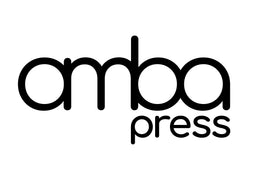If you’ve picked up this book, you and possibly your team are wanting to (or working to) advance teaching and learning across your school.
You might be a principal, a district/network leader, a superintendent, an assistant principal, part of the executive team, a KLA or department chair, an instructional coach, a mentor of new teachers or someone who is focusing on advancing teaching and learning across the school.
If you’re reading these words, I’m guessing you’re committed to the work you’re doing and believe that effective teaching and learning can be a force for good for students and our world. You want to advance teaching and learning across your school because you know your school has the potential to go to the next level of success. You and your team want to expand your school’s impact. For good.
By advancing teaching and learning schoolwide, I’m guessing what you want is to:
- move good teaching to great teaching (or if it’s great, move it to an advanced level) – across your school
- ensure teaching and learning are your school’s number-one priority
- create a common language around high-quality teaching and learning, rather than just focusing on a variety of unconnected teaching strategies
- ensure long-term learning is sticking for all students, rather than focusing on task completion
- support teachers across your school in optimising what they do help your school be an innovative place for teaching and learning rather than a place of compliance.
But you might be feeling overwhelmed and stressed due to:
- constantly trying to ‘keep up’ with the latest new thing
- seeing teaching and learning sometimes taking a back seat to everything else your school is required to do
- feeling like you’re working harder but are not sure if you’re getting lasting outcomes
- getting conflicting advice around the best way to advance teaching and learning
- sometimes being buried in compliance measures that simply add to your team’s overwhelm.
If you can relate to any of these aims and feelings, this book is for you.
Even if you’re highly committed to advancing teaching and learning across your school, have a love of learning or are part of a team reading this book, you might not read it from cover to cover. Instead, you might scan it or search for video clips or a podcast discussion about it. The reason why has little to do with you, your commitment to our profession or your professionalism. Rather, it has to do with the new era we’re now in. That era is impacting your and your team’s time for thinking, learning and reflecting.
The current era might also be impacting your ability to advance teaching and learning across your school. It’s safe to assume that because you’re reading this book, teaching and learning are a high priority for you. Therefore, I invite you to take another step with me.
Why this book now
This book’s mission is to help you understand the new era we’re now in, which I call the era of overwhelm, and learn what it takes to advance teaching and learning across your school in this era. This is important because in the era of overwhelm, education has become increasingly complicated, and you and your team may find yourselves working harder and questioning if you’re focusing on the right things or wondering if your leadership efforts are making a lasting impact.
The good news is that what you’re about to learn won’t require you to ‘reinvent the wheel’ or throw everything out and start over. Rather, it’s designed to help you cut through the noise by showing you the structures, system and actions that can bring things together, rather than add more. The results? You’ll lower stress and overload, achieve schoolwide alignment, and ensure long-term learning for every student so that what they need to know becomes theirs, for good.
Before we explore it, let me first introduce myself.
My story
I’m Dr William DeJean, founder and CEO of Unleash Learning. I’m also the host of Unleash Learning TV and Radio.
I’ve been deep in the education and learning field for 25 years. I have a doctorate in education and have written various articles and books on the subject that reflect what I have learned and experienced over the years.
I began my career as a high school teacher in San Diego and taught for 10 years across the US, winning the 2003 San Diego County Teacher of the Year Award.
While still teaching, I studied for a master’s and doctorate in education. It was invaluable to put my theories immediately into practice and gain a broader, more inclusive understanding of how we humans learn.
I then taught at universities in the US and Australia. I worked with preservice teachers and taught teachers as they studied for their master’s degrees. I developed university courses and consulted extensively with school leadership teams. This gave me an international perspective on education, organisational change and learning that made a lasting impact.
I’ve also noticed something taking place wherever I go. I’ve finally come to understand we’re now in a new era. And the era requires a new way forward.
My mission is to support innovative schools with a new way forward so leaders and teaching teams can make long-term learning stick for everyone.
I hope this book does that for you.
How to use this book
My experience tells me that if learning sticks for you, you’ll be equipped to pass this on to others. That’s why this book is designed to support making learning stick for you, thereby modelling fundamental concepts that are central to Unleash Learning. This book is designed for you as an instructional leader, and I recommend that you read and discuss it with others whose objectives include creating learning environments that
benefit all students.
To model these processes and concepts, throughout the book you’ll see actions I hope you’ll take. Namely, you’ll be asked to write, speak, draw, summarise or take other actions that will cause learning to stick for you.
You’ll see an icon 🏋🏻 as a signal to act. In the era of overwhelm we’re now in (more on this later), you might want to jump over these actions. But I hope you’ll give yourself the time to intentionally engage with them.
Before we get started, there are a few agreements I invite you to make. I’ve found that these agreements can proactively help you make the most of this book and aid in the ways learning sticks for you.
👍 Agreement #1:
Maintain a positivity bias
Positive psychologists tell us that we are programmed with a ‘negativity bias’. That is, our brains are hardwired to look for the negative. This bias probably helped us survive. But today, it doesn’t always serve us well.
It’s possible that as you’re reading this book your hard-wired negativity bias will emerge. It might say things to you like ‘I already know this’ or ‘We do this’ or ‘This won’t work for us’. Or some other negativity bias thought might emerge.
That’s why I’m going to invite you to agree to maintain a positivity bias. You can do this when a negativity bias emerges, by simply asking a question like: ‘How can I make this work for me?’ or ‘How can I make this work for our school?’ If you keep that positivity bias on hand, you’ll be primed to get the most out of this book.
👍 Agreement #2:
Befriend your shadow beliefs
You come to this book already with a vast array of knowledge and expertise. This book is here to help you optimise your strengths and impact. But there’s a chance that while reading it, your shadow beliefs might appear. Shadow beliefs are the parts of ourselves that we reject because we think they’re unacceptable and might cause shame or a negative reaction from others (Ford, 1999). We all have them.
I’ve experienced for myself and seen it with people whom I’ve mentored that when stress, overwhelm, uncertainty or times of change occur, our shadow beliefs rise to the surface.
As you read this book, shadow beliefs such as ‘I’m a bad leader. I’m a fraud. People will find out I don’t know what I’m doing’ or something else you’re probably familiar with might emerge.
If a shadow belief emerges, rather than run away from it, I invite you to observe it and even try to befriend it. It might just need your care and attention and even help you see that you’re more capable than you ever realised. Please remind yourself that it’s just a shadow belief. If it arises, you might even tell it ‘Oh hello there! Nice to see you again.’ Or ask it: ‘What do you need from me?’
And continue reading the book.
👍 Agreement #3:
Trust the process
I’ve seen that learning doesn’t always stick in real time. In the case of this book, it’s possible that learning might not stick for you until the end of the book, when your team discusses it, or months after you’ve read it. Sticky, long-term learning often isn’t a step-by-step event. Rather, it’s a journey that emerges in timeframes different from our own agenda.
That’s why before you begin the book, and throughout reading it, I invite you to agree to trust the process of it. And stay open to what might emerge.
Okay, if you’re ready, so am I. I invite you to keep an open mind (and yes, heart, too). What you’re about to read isn’t a list of strategies to follow or another formula that will come and go. It’s an approach that can lower your team’s mental load and boost your entire school’s impact.
Let’s do this!
___________________________________________________________________________________________
Buy Dr William DeJean's book, A New Way Forward for Schools here.




